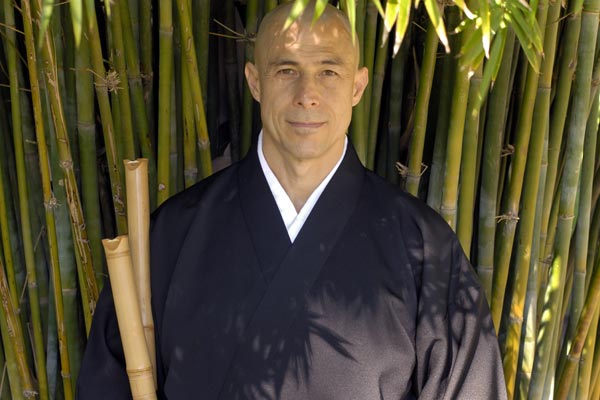Riley Lee was first introduced to the simple Japanese flute, known as the shakuhachi, while working in Japan in the early ‘70s; and has now been playing the instrument for over 40 years.
He is the recipient of two of the oldest and most venerated lineages of traditional shakuhachi, which can be traced back to the Zen Buddhist komusô (priests of nothingness) of the Edo period in Japan. In 1980, he became the first non-Japanese person in the world to attain the rank of dai shihan (Grand Master) on the shakuhachi.
 Lee’s most amazing performance on the shakuhachi was at dawn on 1 January, 2000 ,on the roof of the Sydney Opera House, as part of the millennium celebrations. He performed on one of the ‘sails’ of the majestic Opera House with four other musicians and a young singer from Sydney Children’s Choir. They performed a special piece by Ross Edwards called 'Breath Of Spirit' as dawn broke, that was broadcast across the globe and seen by more than 1 billion people worldwide.
Lee’s most amazing performance on the shakuhachi was at dawn on 1 January, 2000 ,on the roof of the Sydney Opera House, as part of the millennium celebrations. He performed on one of the ‘sails’ of the majestic Opera House with four other musicians and a young singer from Sydney Children’s Choir. They performed a special piece by Ross Edwards called 'Breath Of Spirit' as dawn broke, that was broadcast across the globe and seen by more than 1 billion people worldwide.There are many reasons why Lee loves the shakuhachi, but there are his Top 5:
Natural
The fact that the instrument comes from nature. The shakuhachi is a simple bamboo flute. It is completely natural and totally biodegradable. Other than the human voice there is no instrument more natural.{youtube}JYOx1_v2USY{/youtube}
Sound
The sound of the shakuhachi is unique. Next to the human voice it has the most expressive and evocative sound. It can also do things that a human voice can’t do. It has an amazing quality of sound.Breath
It is a wind instrument that involves breathing. One becomes more aware of their breath when they play the shakuhachi. You live longer and are healthier as a result of this. As a child Lee was an asthmatic, but he no longer suffers from asthma and he credits this in part to the shakuhachi and the breathing that is required to play the instrument.
Cultural
The cultural context of the shakuhachi. Lee really likes the cultural environment from which the shakuhachi originated. He appreciates many aspects of Japanese art and music, with much of the music on the shakuhachi developed in the context of Buddhism. Playing the shakuhachi is meditative and this has been recognized and used for this purpose for many centuries.{youtube}I7nX23-DyWs{/youtube}
Portable
The instrument is truly portable and able to be played anywhere! The shakuhachi is in essence just a piece of bamboo. It is light enough and small enough to go anywhere with you. It is also a fairly sturdy instrument. Because it comes from nature you don’t need to be afraid of nature – so you can play it wherever you want to – inside or outside, on a mountain, in the rain, even under a water fall if you wanted to. You couldn’t do this with any modern instrument from a symphony orchestra.Riley Lee performs with six other shakuhachi masters as part of the Shakuhachi Festival at Redland Performing Arts Centre 3 October.






